The author of a book claims that this is the implementation of Chua's diode by [Kennedy, 1992], although I cannot find this article. My question here is, how does this circuit work? For me, the diagram is a terrible mess.
Note: The circuit shown misses a connection: pin 5 of the (second) opamp should be connected to the input of the device. This is pointed out in a comment.
The voltage-current graph of Chua's diode should look like the graph below. Here are my attempts in making sense of the circuit above:
- It looks as if the two opamps are divided into two groups. Each group has identical configuration but different resistor value.
- The output potential of an opamp is linear, but cannot surpass its input voltage: in this case 9+9=18 volts. It appears that, due to different resistor values, one opamp reaches this limit before this other: this is where the slope of the line suddenly changes in the graph below.
- But what will happen if both opamps reaches this limit?
I cannot figure this out - How can I work out the voltage-current graph from the circuit diagram?

